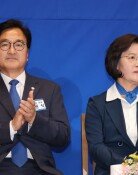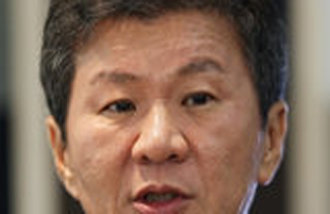Responsibility for fiasco over new int`l airport
Responsibility for fiasco over new int`l airport
Posted March. 31, 2011 10:55,
A government evaluation committee on building an international airport in the nation`s southeast region recently concluded that Gadeok Island off the coast of Busan and Miryang in South Gyeongsang Province failed to meet the requirements for the new airport. Residents of the two areas must feel dejected by this since President Lee Myung-bak made an election pledge to build an airport in the region. He and the government should take the blame for causing conflict and confusion in the candidate sites since the infeasible project was proposed through an election promise.
The airport project was first mentioned in December 2006 when then President Roh Moo-hyun ordered a review in the region. In August 2007, presidential candidate Lee promised to build an international airport in the southeast region. He presented a blueprint in saying, "By building a new airport in the southeast region, I will create a new turning point in logistics in Daegu, North Gyeongsang Province, Busan, Ulsan and South Gyeongsang Province." The residents of the candidate sites must now feel betrayed with the scrapping of the project after the president pledged it to win the election. The airport would have cost tens of billions of dollars and lacked a thorough feasibility study.
Seoul National University professor Park Chang-ho, who chairs the evaluation committee, said, "Due to unfavorable geographical conditions, both Gadeok Island and Miryang, which were selected among 35 candidate sites, are not economically feasible given the possibility of excessive environmental damage and costs." The problems, however, are strong resistance and aftereffects. The Busan city government is claiming that it will independently build an airport on Gadeok Island with private investment or foreign capital. Daegu proposed building an airport in Miryang by holding campaigns including a massive rally and movement to get rid of the staff responsible for the failure.
President Lee must have cleared out infeasible national projects early in his term though he made them as election pledges. Politicians of the candidate sites pushed ahead with regional self-centeredness while the government postponed making a final decision. The government was inattentive to the overheating aspect of lawmakers and governors as well as cities and provinces that lifted placards up even in the streets of Seoul. A decision should have come much earlier if the election pledge was found unfeasible.
National projects aiming at regional development made for political purposes without considering economical effects result in conflict and are apt to fail. The Sejong City project for constructing a new administrative capital, which caused soaring land prices and waste of public money, was a typical example. The international science-business belt project President Lee pledged to build in the Chungcheong provinces is also now creating conflict among regions in the aftermath of the cancellation of the Sejong City project. Taking this opportunity, Korea must break the vicious cycle of big national projects being decided by regional or political interests, not by national interests. To do this, the political and civic circles need to put their heads together and contemplate.







